Merlin helicopters will be the first aircraft to begin flying from HMS Queen Elizabeth, soon followed by Apache, Wildcat, Chinook and F-35.
Merlin helicopters are expected to start ‘low-risk, simple flights’ from the carrier in Summer, before the ship arrives in Portsmouth for the first time. This was previously expected to be be in Spring.
These flights will be followed by flight trials in early 2018 according to Captain Kieran O’Brien, Merlin team leader for the Ministry of Defence.
Queen Elizabeth is due to start sea trials in Summer before her first deployment in 2021, followed by sister ship the Prince of Wales.
It was earlier stated that Merlins would start simple flight activities in March 2017 with first of class flight trials in early 2018, F-35s begin flying from the deck later that year for trials.
Former First Sea Lord George Zambellas said:
“When the first of our new carriers, HMS Queen Elizabeth, deploys on her first mission in a few years, with fifth generation fighters and drones embarked, she will scotch at a stroke any talk of Britain’s retreat from the world.”
What will the vessels carry?
The term now used for the carriers embarked squadrons is ‘Carrier Air Wing’ (CVW). The vessels are capable of deploying a variety of aircraft in large numbers, up to a maximum in the upper fifties in surge conditions.
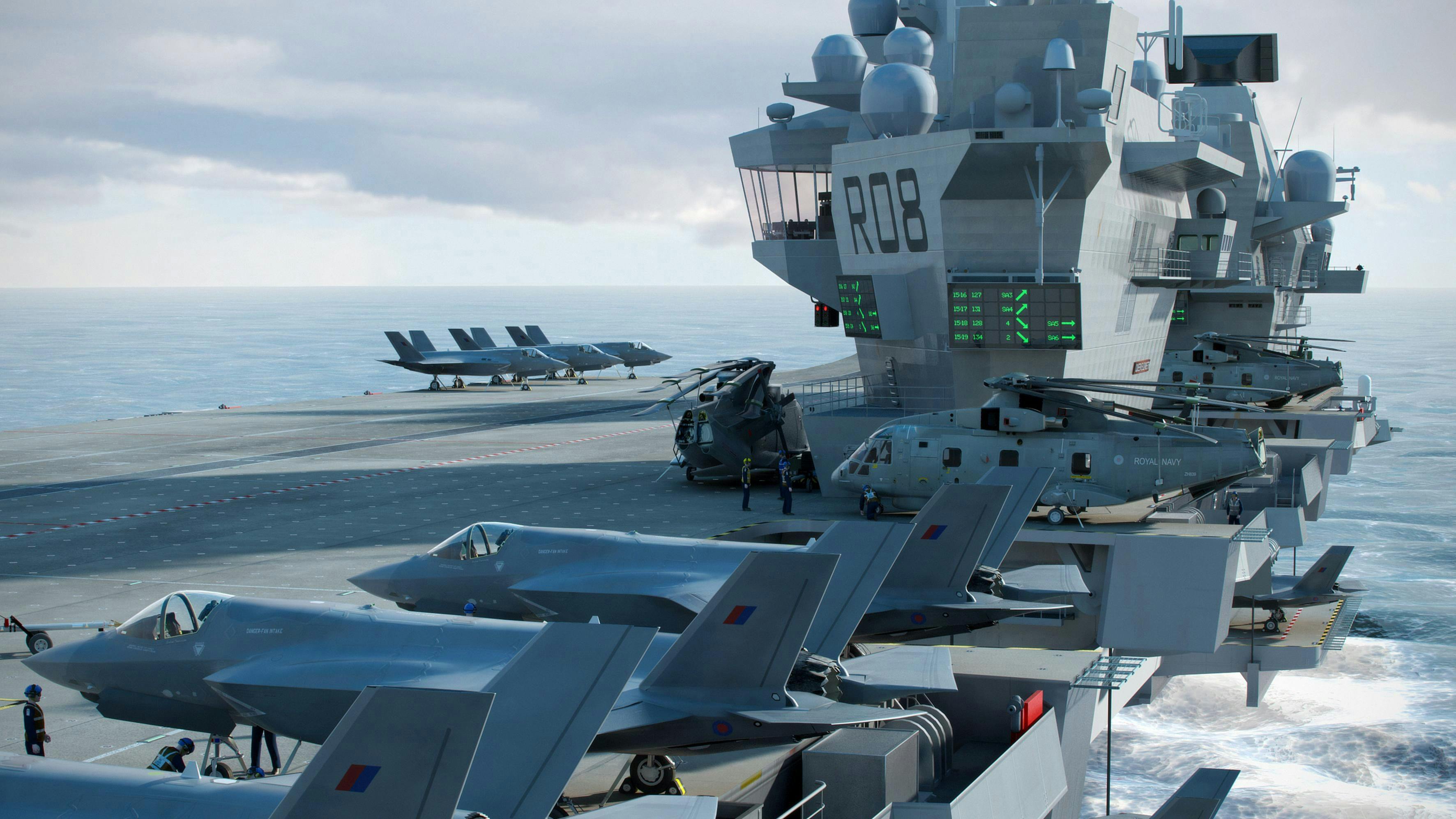
Captain Jerry Kyd, commander of HMS Queen Elizabeth, commented on the initial deployment and the gradual increase in air wing numbers:
“We are constrained by the F-35 buy rate even though that was accelerated in SDSR in 2015, so initial operating capability numbers in 2020 are going to be very modest indeed.
We will flesh it out with helicopters, and a lot depends on how many USMC F-35s come on our first deployment in 2021. But by 2023, we are committed to 24 UK jets onboard, and after that it’s too far away to say.”
In addition to the joint force of Royal Air Force and Royal Navy F-35Bs and their pilots, the air wing is expected to be composed of a ‘Maritime Force Protection’ package of nine anti-submarine Merlin HM2 and four or five Merlin for airborne early warning; alternatively a ‘Littoral Manoeuvre’ package could include a mix of RAF Chinooks, Army Apaches, Merlin HC4 and Wildcat HM2. We understand that vessel would still carry at least one F-35 squadron aboard in such circumstances to offer air defence as well as support to the helicopter assault activities.
The Crowsnest AEW&C aircraft will come from a number of the embarked Merlins (any of which can be fitted with the sensor package), the number again scaling with requirements.
Around the time the first carrier deploys operationally, the UK will have 42 F-35 aircraft, with 24 being front-line fighters and the remaining 18 will be used for training (at least 5 on the OCU), be in reserve or in maintenance.
Recently, the Ministry of Defence confirmed plans for the deployment of American F-35 aircraft alongside British jets aboard HMS Queen Elizabeth.
The addition of US Marine Corps aircraft will see HMS Queen Elizabeth sail with 24 or so F-35Bs in addition to around 14 or so helicopters for her maiden deployment. It is understood that the US aircraft will augment British jets on coalition operations.
We understand that the composition of the CVW is a balance between ship capacity and squadron availability. Squadrons assigned or ‘programmed’ to sail on deployment will mostly in the case of the aircraft carrier be unique to it, for example the airborne early warning helicopters that have no other purpose but to serve the carrier force.
In addition, we have also been told by a senior source that we will shortly see decisions like this for the F-35B and “maybe a utility helicopter (or tilt-rotor in future) type”.
The source we spoke to told us that his expectation is that the vessels will sail with a larger number of F-35 than previously expected because “It is not that they can’t do land based operations, just that there is a need to get the return on investment for the well found forward deployed bases that these aircraft carriers that form the centre of the CSG are” and that “the capacity of the F-35B force in the near years in particular is very limited and it is unwise to do other deployments”.
We discussed this with retired Air Marshal Greg Bagwell who expressed doubt that the composition of the CVW would develop this way initially, referring to the idea of set numbers being assigned so far in advance he said:
“There is absolutely no need to fix a flexible capability so far in advance – it hems politicians in unnecessarily.”
Another source we spoke to, currently flying the jet, explained to us that the vessels will deploy with the number and type of aircraft required for a specific deployments:
“Where F-35B is based is entirely down to the most suitable basing option for the tasks/missions is being sent to do. If that’s a well-founded host nation base, great; if it’s the Carrier, great; if it’s an austere location, fine.
Range, logistics and other ‘enablers’ such as AAR and connectivity will determine what’s the best option.”
The Queen Elizabeth class mark a change from expressing carrier power in terms of number of aircraft carried, to the number of sortie’s that can be generated from the deck. The class are not the largest class of carrier in the world but they are most likely the smallest and least expensive carrier the Royal Navy could build which still have the advantages that large carriers offer.


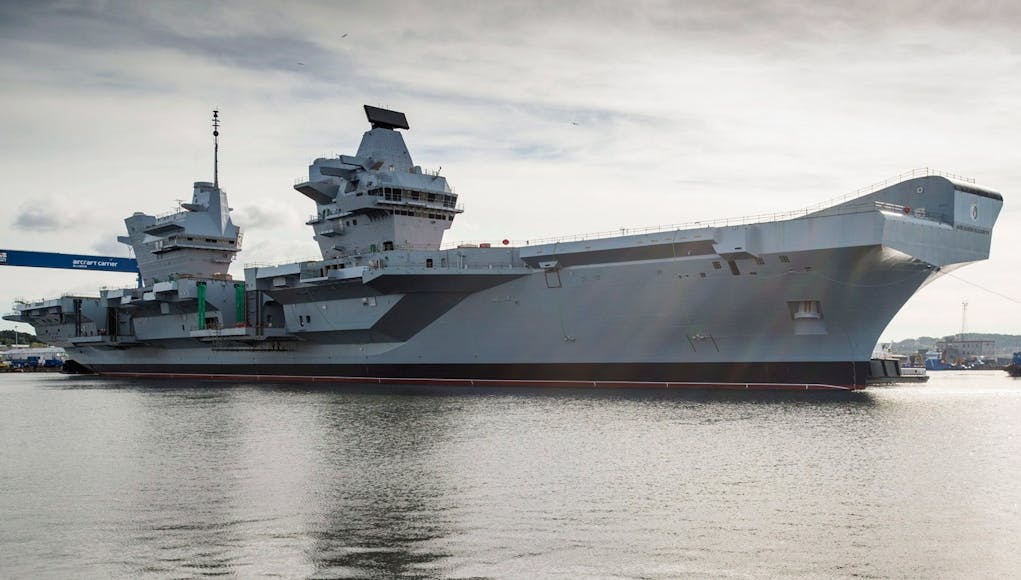





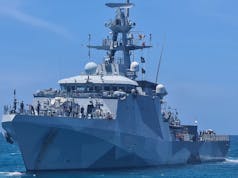
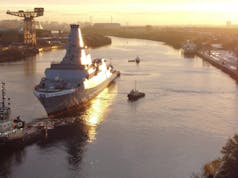
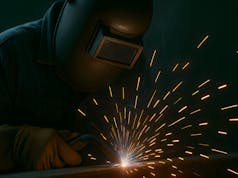
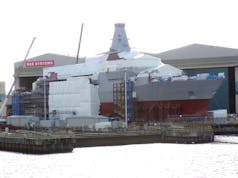


There were some people moaning that the F35b would not be seen very often on the QEC because of resistance from the RAF.
This article counteracts that.
These ships will give the UK the flexibility in anti-submarine warfare, strike and littoral manoeuvre we haven’t had for a generation.
I agree that these great vessels will give the Royal Navy added flexibility, however the fact remains that we need more vessels. If we are to operate supercarriers they must have ample escorts and vessels available for other duties even if both carriers are operational.
Improving conditions of service for our servicemen and women will create recruitment, they will come. Some people negative about our young people, but I think they have the same blood of the hard men who fought the battle of the atlantic.
The Clyde has a proud history of buiding vessels for the Royal Navy but Shipbuilding must also take place in other historical areas such as the Tyne and the Mersey. Commercial shipbuilding could follow quickly, utilising the skilled work force created building warships and this launching a new era of British shipbuilding. Am I a dreamer? I dont know but its a possibility. Good luck guys!
Well waddyaknow, the RAF guy pours cold water on the idea on large F-35B deployments on the carrier. Restricting the politicians choices my a*s. More like too far from the squadrons local.
Go research how often and how many Harriers embarked on the Invincibles after the RAF took over responsibility.
As for 42 UK F-35B’s, I see the author is very careful not to mention any date.
At the moment 8 have been purchased. No more are on order. Any more than that has to be viewed in the recent news that the MoD has to make 6 billion in savings.
The rest of the article offers the same information that was written in the QE naming glossy brochure from a few years ago.
I have to say I really don’t recognise any of the situations you describe. You have a pop at the RAF guy for stating a fact that the F-35 will go wherever it is needed. Likewise to somehow blame the RAF for the number of Harriers deployed on a carrier hardly stands scrutiny as they do as they are commanded by the Chiefs.
Did a Crab upset you somewhere in the past?
Blame a lack of Sea Harrier IIs on Whitehall. Mind there are still 14 Sea Harriers at HMS Siskin (Culdrose) training Deck Handlers.
You are wrong about the current number of F-35s ordered and delivered. Procurement of a further batch of 14 aircraft has already been authorised. The expected split is 4 in LRIP 8, 6 in LRIP 9 and 4 in LRIP 10. This should lead, by end-2018, to the following situation:
– 5 F-35B training fleet in Beaufort (to move to Marham early 2019)
– 3 F-35B test fleet in Edwards
– 9 F-35B in 617 Sqn, to RAF Marham
Total = 17 (out of 42 or 40%)
Which of course is all tied in with HMS QE flight trials in 2018. Given the priority the US has given to USMC F-35Bs (50 aircraft delivered up to LRIP 8) then I see it as an excellent idea we make use of a fully IOC outfit to speed up trials on HMS QE.